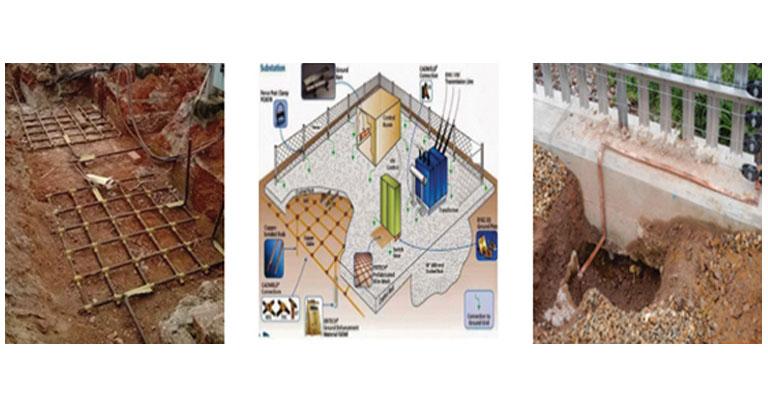Earthing and its types
By EPR Magazine Editorial February 5, 2022 11:05 am IST
By EPR Magazine Editorial February 5, 2022 11:05 am IST

What is earthing?
As per IEEE 80-2000, the process of transferring the immediate discharge of electrical energy (fault current) directly to the earth with the help of the low resistance path/wire is known as earthing.
Types of electrical earthing
Neutral Earthing
Equipment Earthing
What is Earth Resistance?
The resistance offered by the earth to the flow of fault current is called earth resistance. It should ideally be ZERO, but the NFPA and IEEE bodies have recommended a value of less than 5 Ohms

The Goal of Earthing
Substation earthing system
Earth Mat or Grid
The primary requirement of earthing is to possess a really low earth resistance. Individual electrodes have a fair resistance, but if individual electrodes are connected together and linked then resistance parallel path is created so overall value of earth resistance decreases.
Maximum permissible resistance of earthing system for substation
Large power sub-station : 0.5 ohms
Major sub-station : 1.0 ohms
Small sub-station : 2.0 ohms
In all other cases : 5.0 ohms
Ideally a ground should be of Zero ohms’ resistance. However, the National Fire Protection Association (NFPA) and Institute of Electrical and Electronics Engineers (IEEE) have recommended a ground resistance value of 5.0 ohms or less. The earthing resistance of a power station should not be greater than 0.5-Ohm because a power station is required to carry high earth currents.
Step and Touch Potential

Step Potential
Step potential is the voltage between the two feet of a person standing near an energised grounded object. To escape step potential hazards; it is recommended using very short steps, or move away from the electrical fault keeping both feet close together. Employees in danger should avoid taking large steps.
Touch Potential
It is the potential within a charged object and the feet of the person in connection with object. To avoid touch potential, operator will need to use high insulated gloves and shoes.
Expertise shared by:
Vishwadeep Nanda,
Product Manager & Profit Centre Head – Test and Measuring Instruments,
Rishabh Instruments Pvt. Ltd.
We use cookies to personalize your experience. By continuing to visit this website you agree to our Terms & Conditions, Privacy Policy and Cookie Policy.